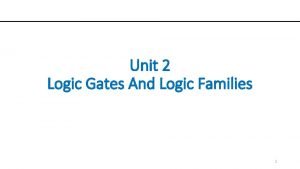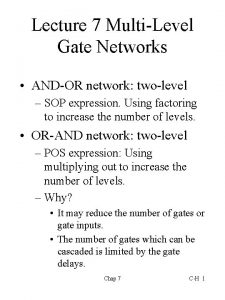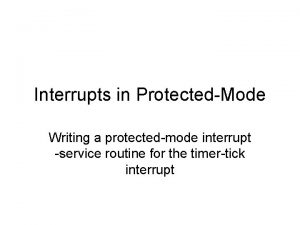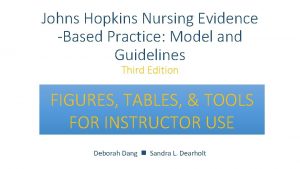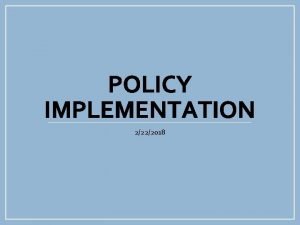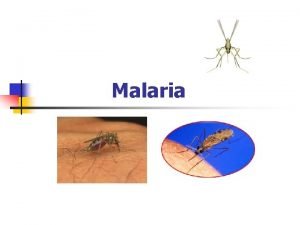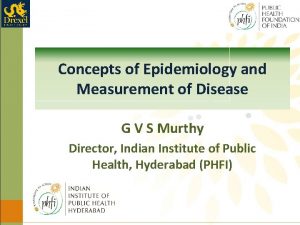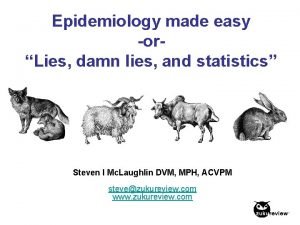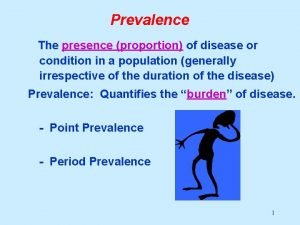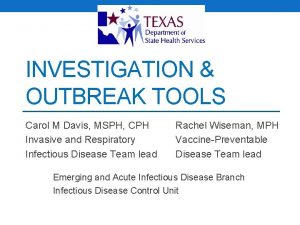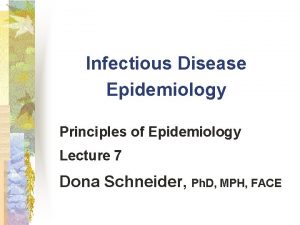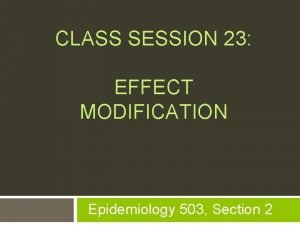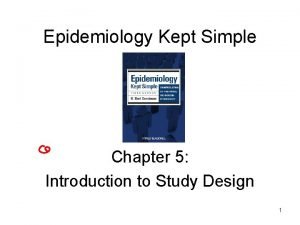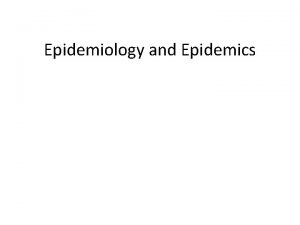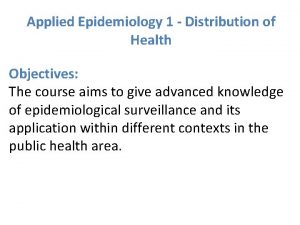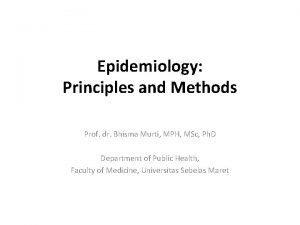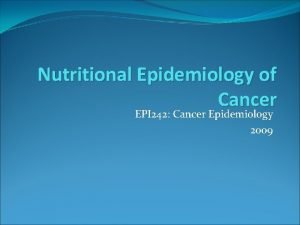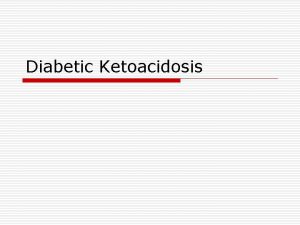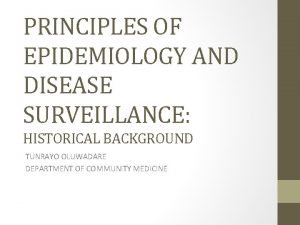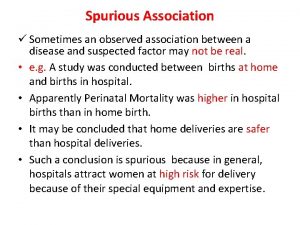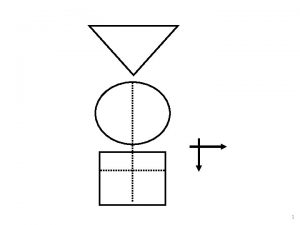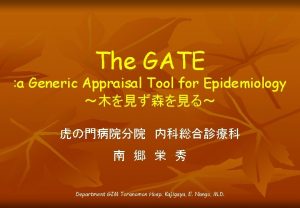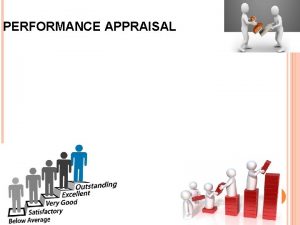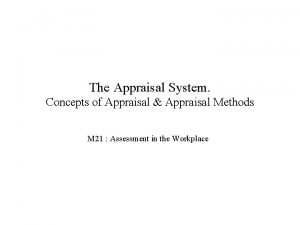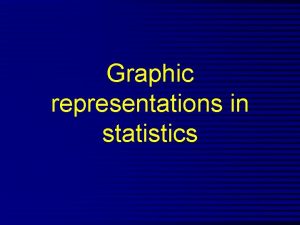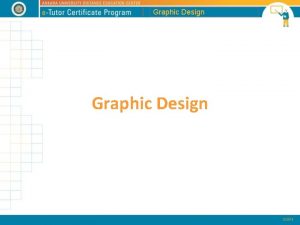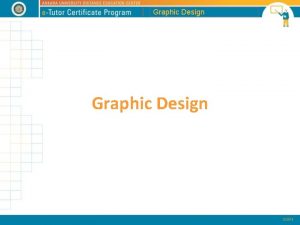1 GATE Graphic Appraisal Tool for Epidemiology 1991
























































- Slides: 56

1

GATE: Graphic Appraisal Tool for Epidemiology 1991 - 2015 1 picture, 2 formulas & 3 acronyms 2

GATE: Graphic Appraisal Tool for Epidemiology Graphic Architectural Tool for Epidemiology Graphic Approach To Epidemiology making epidemiology accessible 3

4 th year medical students 1991

Jerry Morris numerator epidemiology = denominator In: Uses of Epidemiology 1957 5


presentation outline GATE is a framework for: 1. study design 2. study analysis 3. study error 4. practicing EBM 1 picture, 2 formulas & 3 acronyms 7

1

GATE: a framework for study design 1 picture every epidemiological study can be hung on the GATE frame 1 picture, 2 formulas & 3 acronyms 9

1 picture: GATE frame cohort of British doctors smoking status allocated by measurement (observation) smokers lung cancer yes events counted no non-smokers followed for 10 years cohort / longitudinal / follow-up study 1 picture, 2 formulas & 3 acronyms 10

1 st acronym: PECOT British doctors P Participants randomly allocated to aspirin or placebo Exposure E C Comparison aspirin placebo Outcomes yes MI no O T Time 5 years randomised controlled trial 1 picture, 2 formulas & 3 acronyms 11

middle-aged Americans P body mass index measured overweight diabetes status measured in all participants yes no E C ‘normal’ weight O T cross-sectional (prevalence) study 12

middle-aged American women P receive mammogram screening test mammogram positive breast cancer yes no E C O mammogram negative T diagnostic test (prediction) study 13

middle-aged American women P Gold Standard breast cancer positive mammogram negative test E C O no breast cancer T diagnostic (test accuracy) study 14

P smokers lung cancer E C non-smokers smoking status measured cases yes no O controls T case-control study (all nested in virtual cohort studies) 15

£ 100

2

GATE: a framework for study analysis: 1 st formula: occurrence = outcomes ÷ population the numbers in epidemiological studies can be hung on the GATE frame 1 picture, 2 formulas & 3 acronyms 18

1 st formula: occurrence of outcomes = number of outcomes ÷ number in population/group British doctors P Participant Population smoking status measured Exposure Group EG CG Comparison Group smokers Outcomes Lung cancer non-smokers yes no a O b T Time 10 years 19

Population P British doctors smoking status measured Exposure Group EG CG Comparison Group smokers Outcomes Lung cancer non-smokers yes no a O b T Time 10 years Exposure Group Occurrence (EGO) = a÷EG = number of outcomes (a) ÷ number in exposed population (EG) 20

P British doctors Population randomly allocated Exposure Group EG CG Comparison Group aspirin Outcomes MI placebo yes no a O b T Time 5 years Comparison Group Occurrence (CGO) = b÷CG = number of outcomes (b) ÷ number in comparison population (CG) 21

Epidemiology = Numerator ÷ Denominator P middle-aged American women Participant Population receive mammogram screening test D Exposure Group EG mammogram positive Outcomes yes breast cancer no a Comparison Group mammogram negative N O T Time 22

the goal of all epidemiological studies is to calculate EGO and CGO P British doctors smoking status measured smokers yes EGO: Occurrence (risk) of no cancer in smokers EG a CG non-smokers O b Lung cancer 10 years T CGO: Occurrence of cancer in nonsmokers 23

Middle-aged Americans P Body Mass Index (BMI) measured High BMI high low EGO: Average blood glucose in EG EG CG O Low BMI CGO: Average blood glucose in CG 24

Middle-aged Americans P Body Mass Index (BMI) measured High BMI blood glucose high low E C Low BMI O T cross-sectional study with numerical measures 25

Middle-aged American women P Gold Standard Breast cancer mammogram positive negative EGO: likelihood of a positive mammogram if breast cancer E C O no Breast cancer T CGO: likelihood of a positive mammogram if no breast cancer 26

1 st formula: occurrence = outcomes ÷ population its all about EGO and CGO • EGO ÷ CGO = Relative Risk (RR) • EGO – CGO = Risk Difference (RD) measures of occurrence: risk; rate; likelihood; probability; average; incidence; prevalence 27

3

GATE: framework for nonrandom error 2 nd acronym: RAMBOMAN Recruitment Allocation Maintenance Blind Objective Measurements ANalyses 1 picture, 2 formulas & 3 acronyms 29

Study setting Eligible population RAMBOMAN recruitment process P P Recruitment of participants ‘who are the findings applicable to? ’ 30

RAMBOMAN: ‘were participants well Allocated to exposure & comparison groups? ’ was Allocation to EG & CG successful? RCT: allocated by randomisation (e. g to drugs) Cohort: allocated by measurement (e. g. smoking) EG & CG EG CG similar at baseline? T O EG CG T E & C measures accurate? O 31

P RAMBOMAN ‘were Participants well Maintained in the groups they were allocated to? ’ EG CG T O completeness of follow-up compliance contamination co-interventions 32

P EG CG RAMBOMAN ‘were outcomes well Measured? ’ were they measured Blind to whether participant was in EG or CG ? O T 33

P RAMBOMAN ‘were outcomes well Measured? ’ EG CG were they measured Objectively? O T 34

RAMBOMAN P ‘were the ANalyses done well? ’ EGA CGA EGC CGC a T O If RCT were Intention To Treat (ITT) analyses done? b 35

P RAMBOMAN ‘were the ANalyses done well? ’ EG CG adjustment for baseline differences / confounding? O T 36

GATE: random error: 2 nd formula: random error = 95% confidence interval sample from a population EGO ± 95% CI CGO ± 95% CI There is about a 95% chance that the true value in the underlying population lies within the 95% CI (assuming no non-random error) 1 picture, 2 formulas & 3 acronyms 37

GATE: a framework for error in systematic reviews & meta-analyses: 3 rd acronym: FAITH 1 picture, 2 formulas & 3 acronyms 38

systematic review: a study of studies study sources studies screened studies appraised & allocated: included excluded studies summarised & pooled if homogeneous 39

critical appraisal of SR: FAITH study sources Find studies screened Appraise studies appraised & allocated: Include included Total Heterogeneity? excluded studies summarised & pooled if homogeneous 40 1 picture, 2 formulas & 3 acronyms

4

GATE: framework for the 4 steps of EBP 42

the steps of EBP: 1. Ask 2. Acquire 3. Appraise 4. Apply & Act 43

EBP Step 1: ASK - turn your question into a focused 5 -part PECOT question P 2. Exposure 4. Outcomes E yes no 1. Participants C O 3. Comparison T 5. Time 44

EBP Step 2: ACQUIRE the evidence – use PECOT to help choose search terms P Exposure Outcomes E yes no Participants C O Comparison T Time 45

EBP Step 3: APPRAISE the evidence – with the picture, acronyms & formulas Recruitment P P Allocation E E C O T Maintenance blind objective Measurements ANalyses Occurrence = outcomes ÷ population Random error = 95% Confidence Interval 46

APPLY the evidence by AMALGAMATING the relevant information & making an evidencebased decision: ’ the X-factor © 47

48

X-factor: making evidence-based decisions epidemiological evidence person values & preferences family community economic system features patient’s clinical circumstances practitioner political ph lth ea l ca gi lo l lh ho ica yc ys ps cia so X legal Practitioner e pertise: ‘putting it all together’ - the art of practice Clinical expertise in the era of evidence-based medicine and patient choice. EBM 2002; 736 -8 (March/April) 49

GATE critically appraised topic (CATs) forms find these at: www. epiq. co. nz

GATE CAT – 4 -sheet workbook (in Excel) sheet 1: GATE-Ask & Acquire 51

GATE CAT – 3 -sheet workbook (in Excel) sheet 2: GATE-Appraise (with calculator) 52

GATE CAT – 3 -sheet workbook (in Excel) sheet 3: GATE-Apply 53



56
 Rambo critical appraisal tool
Rambo critical appraisal tool Gate frame epidemiology
Gate frame epidemiology Construct not gate using nand gate
Construct not gate using nand gate Nand gate to and gate
Nand gate to and gate Trap gate vs interrupt gate
Trap gate vs interrupt gate John hopkins model
John hopkins model Axis cross sectional study
Axis cross sectional study Online calworks appraisal tool
Online calworks appraisal tool Amplification through simplification
Amplification through simplification Ghost graphic story graphic and wayfinding
Ghost graphic story graphic and wayfinding People infected
People infected Epidemiology definition
Epidemiology definition Distribution in epidemiology
Distribution in epidemiology Incidence density formula
Incidence density formula Defination of epidemiology
Defination of epidemiology Difference between descriptive and analytical epidemiology
Difference between descriptive and analytical epidemiology Epidemiology made easy
Epidemiology made easy Prevalensi adalah
Prevalensi adalah Field epidemiology ppt
Field epidemiology ppt Perbedaan or rr dan pr
Perbedaan or rr dan pr Gordon nichols
Gordon nichols Attack rate epidemiology formula
Attack rate epidemiology formula Attack rate calculation
Attack rate calculation Attack rate epidemiology
Attack rate epidemiology Define epidemiology
Define epidemiology Descriptive vs analytic epidemiology examples
Descriptive vs analytic epidemiology examples Effect modification vs confounding
Effect modification vs confounding Epidemiology concept
Epidemiology concept How to calculate incidence rate example
How to calculate incidence rate example How dr. wafaa elsadr epidemiology professor
How dr. wafaa elsadr epidemiology professor Define nutritional epidemiology
Define nutritional epidemiology Epidemiology kept simple
Epidemiology kept simple Web of causation example
Web of causation example Difference between descriptive and analytical epidemiology
Difference between descriptive and analytical epidemiology How dr. wafaa elsadr epidemiology professor
How dr. wafaa elsadr epidemiology professor Epidemiology triad
Epidemiology triad Distribution in epidemiology
Distribution in epidemiology Level of prevention
Level of prevention What is descriptive study in epidemiology
What is descriptive study in epidemiology Pros and cons of cross sectional study
Pros and cons of cross sectional study Epi
Epi Logistic regression epidemiology
Logistic regression epidemiology Diabetic ketoacidosis epidemiology
Diabetic ketoacidosis epidemiology Percentage defination
Percentage defination Epidemiology person place time
Epidemiology person place time John snow epidemiology
John snow epidemiology Meaning of epidermiology
Meaning of epidermiology Spurious association in epidemiology
Spurious association in epidemiology Cbic recertification
Cbic recertification Temporal relationship epidemiology example
Temporal relationship epidemiology example Potter's wheel data cleaning tool
Potter's wheel data cleaning tool Tack för att ni har lyssnat
Tack för att ni har lyssnat Läkarutlåtande för livränta
Läkarutlåtande för livränta Klassificeringsstruktur för kommunala verksamheter
Klassificeringsstruktur för kommunala verksamheter Centrum för kunskap och säkerhet
Centrum för kunskap och säkerhet Inköpsprocessen steg för steg
Inköpsprocessen steg för steg Påbyggnader för flakfordon
Påbyggnader för flakfordon


